The event CoLaboratory 2.0. / Perpetual Grains, which took place at the German Cultural Center in Sibiu, proposes an exploration of nostalgia via a kind of game that urges viewers to question the relationship between fragments and wholes in evocative gestures. During the three days of The White Night of Galleries in Sibiu (15-17 October 2021), the public was invited to discover Alexandra Coroi’s project, the artist behind the video component, and Yotam Schlezinger, the creator of the sound installation. The show was curated by Iris Ordean and was part of the CoLaboratory 2.0. digital residency (a concept initiated by the Goethe Institute in Bucharest) and consisted of a series of black and white videograms displayed on seven screens facing up and a video projection on one of the gallery’s walls. The screens were interconnected with white bands of paper tape, akin to pieces of parchment that link them into a network of words and expressions. The exhibition has been thoroughly video-documented and has been immortalized in digitality, and since it takes on the topic of time, I will be using the present tense for this review.
The first steps within the exhibition are guided by a white band inscribed with a quote from “The Enchanted Mountain”, a key reading for the whole ensemble, as well as an anti-narrative thread disguised within the threshold: “Time drowns in the infinite monotony of space, the movement from one end to another in no longer a movement, and where there is no movement, there is no time.” Gazing down at the floor, the viewer must follow the strands and move from one videogram to another. In a game-like manner, they can choose between several paths to follow, as the threads branch out. All eight videograms – including the largest, Silent Sage – play with concepts like motion and time: eyes closing and opening, a reminder that a moment and an instant are units of live time within the body, when closing and opening eyelids or when holding or letting go of someone’s hand; in Friptea, a pair of hands play with a fruit and a hand touches a piece of stone covered with grass and moss.
All of these movements happen in a loop, within a closed temporal regime, and represent small, explicitly fragmentary and circular gestures of opening to the outside world. The words connecting them are also fragments. With the exception of Thomas Mann’s quote, the linking words do not articulate phrases, but rather connect with each other via commas, in rows. These are all temporally charged words, hinting at a fragmented and nostalgia infused temporality. Just like the videograms, the words themselves evoke bits of gestures. The band containing the text fast movement, looking over your shoulder, breathe, breathe, guides the spectator to a monochrome video, the only one dominated by yellow: an agitated look, eyes wide open, unable to focus, simply look around, scared. Breath and the rhythm of the gaze intertwine into an expression of fear. From this videograme, a new series of words leads the viewer into a more peaceful area of nostalgia: vegetable stew, childhood games – basically, a cure for the previously induced state. The childhood games also appear on screen: the videograme Why we can’t have nice things illustrates yet another pair of hands exploring the surface of a fruit and the possible gestures that arise from this sensorial exploration. The game is also akin to playing with a stress ball, a small therapeutic gesture meant to drive away any dysphoric state and bring in calm.
The next thread of words slips into other sensorial variants of nostalgia: …that go faster and faster (continuing the last thread), imitate waterfalls, linden tea with melted sugar spoons. the cubes are… while the videograme attached to this thread shows Gesture rocks, a hand caressing a stone from top to bottom. To its right, the text continues: …expensive and must be held on the tip of the tongue, afternoon nap on… – followed by a sleepy gaze, a pair of eyes about to discreetly fall asleep. This video is connected to three bands of text: the one just described, Mann’s quote, and another strand of text that carries on the nostalgic thread: …a spring mattress, pillow fight, hugging a pillow – followed by another video depicting two eyes that appear to be gazing at the gestures evoked. The memory route continues: touching a cold doorknob with your tongue, snowballs. Two other videograms on screens, Friptea and As soon as I open my eyes, are connected by the text.
All of these video works contain details and convey the most expressive parts of the human body, the eyes and the hands, but never the whole body. This could perhaps be a metonymy – components that make up a whole – but what is the whole? These gestures and moments conjure up emotions that are hard to contain into a whole, since they are nostalgic. And nostalgia is precisely the effect of the past’s incompleteness. Not even the video projection Silent sage, of a larger size, does not depict a whole, but a mediated image, a figure standing near a window. From their hands spring colorful, kaleidoscopic lights outside the frame, like a pale constellation barely moving. As the medium is the message, the image of a window projected onto a wall concludes the route with yet another opening: if the screens are meant to immerse the viewer in moments and gestures, the window and lights coming from one’s hands suggests there is an infinity of gestures that loop around each other, inviting each individual spectator to make their own connections and explore the endless possibilities of the gestures caught on video.
Perpetual Grains
Audio-video installation as part of the CoLaboratory 2.0 residency
Artists: Alexandra Coroi (offline) and Yotam Schlezinger (online)
Curator: Iris Ordean
Residency organized by: The German Cultural Center in Sibiu and The Goethe Institute in Bucharest
POSTED BY
Alexandra Ilina
Alexandra Ilina is lecturer at the French Department of the Faculty of Foreign Languages and Literature (Bucharest University), focusing on medieval literature, iconography derived from literature and...
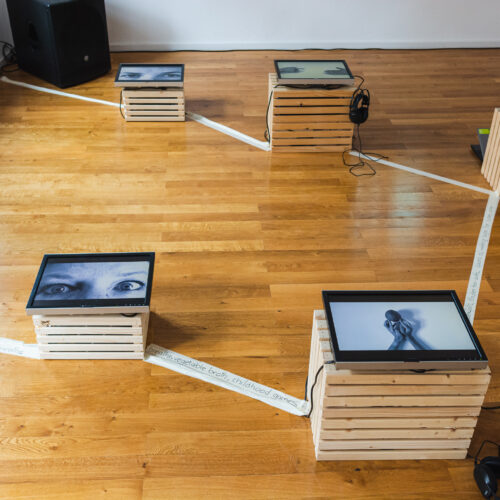
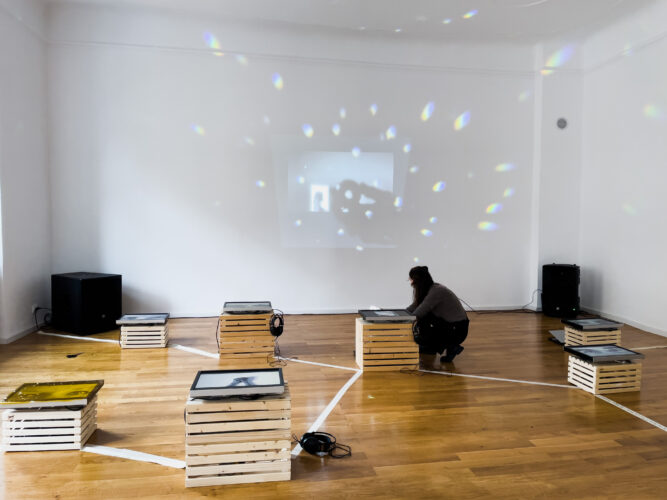
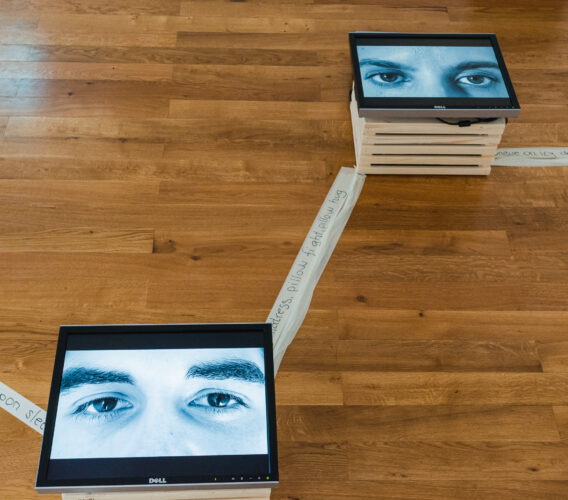
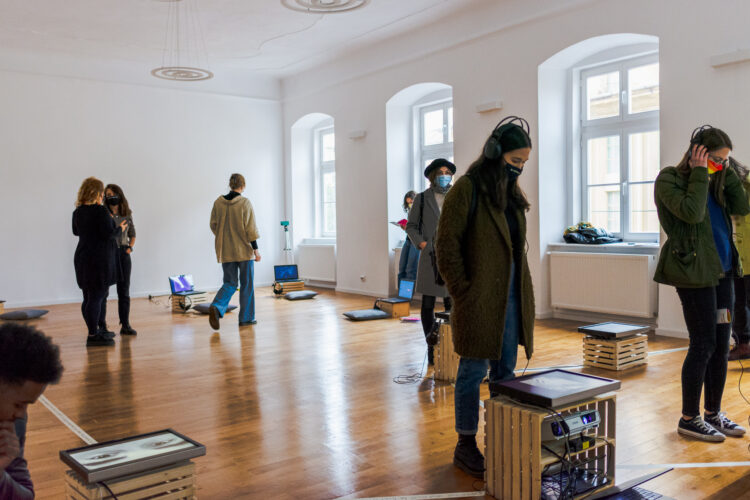
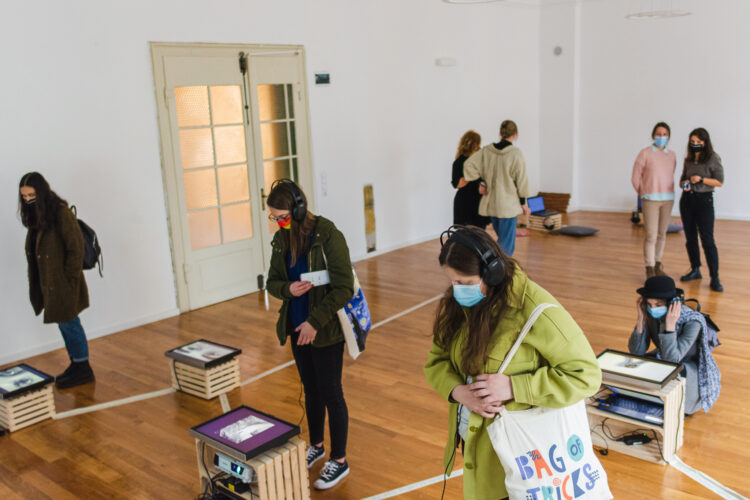
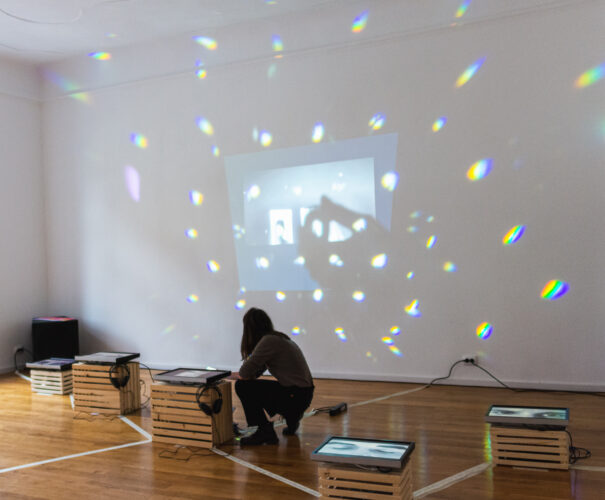
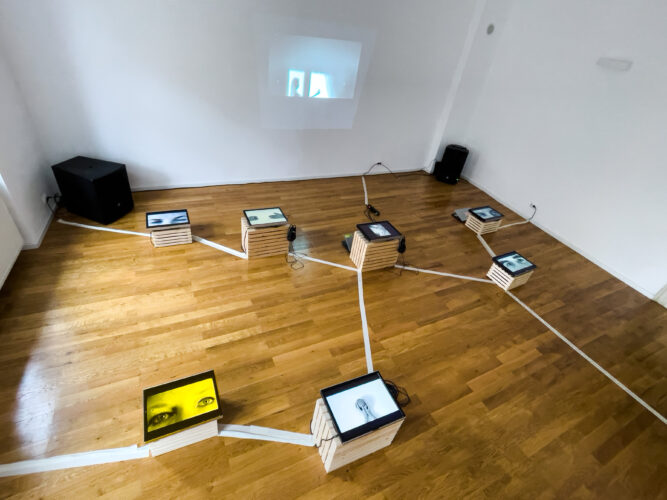
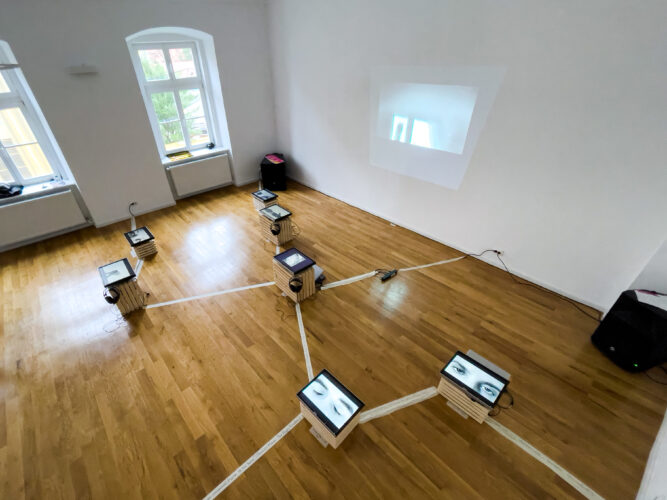
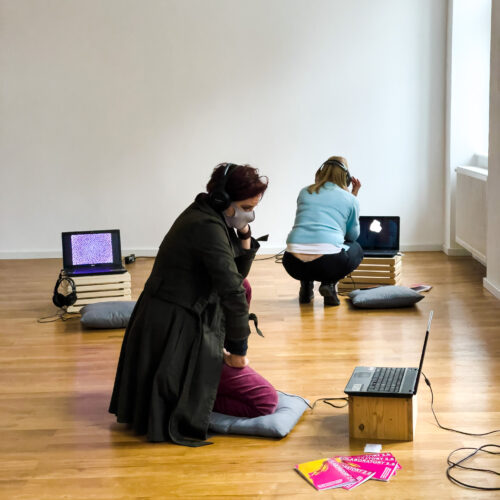

Comments are closed here.